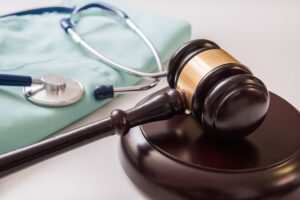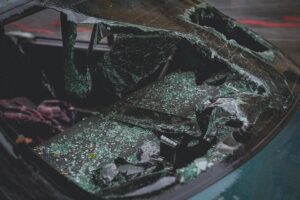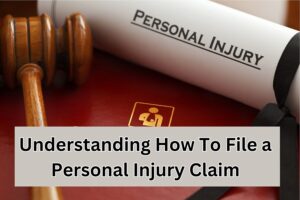What To Consider If You’ve Been In A Hit and Run

Any traffic accident can cause you to do things that you may have never done under other circumstances. Accidents can make your heart pound fast, take you out of your wits, and cause you to act without thinking first. Unfortunately, hit-and-runs can be a result of not knowing how to react to an accident properly.
If you, a driver, hits a pedestrian, another car, or property, and you flee from the area of the crash or if you gave false information, you have committed hit-and-run.
What to do after a hit and run
The possibility of getting involved in an accident always exists, and this is why you’d need to prepare ahead of time. You should arm yourself with what to consider if you’ve been in a hit and run accident.
Stay at the scene of the accident
Don’t try to run after the culprit so as not to make things worse. You should wait for the police and emergency responders to get in the scene. The law obliges you to stay at the scene, especially if there are people who got injured or properties have been damaged due to the accident.
Contact the police immediately
Once you’ve secured that everyone’s safe, call the police as soon as you can. The police will let you clear things up by allowing you to answer questions for the police report. The police report can serve as an unbiased report of police officer/officers who responded to your call.
The contents of the initial police report:
- Names of the people involved
- Statements of the people involved
- Time and place of the accident
- Pictures of the crash (if there are any)
- Opinion of the responding police officer
The police report will help you figure out the extent of the degree of liability of the defendant and the damages you’ve received from the accident. Even if the person at fault is not found, you’ll be needing the police report for filing your insurance claims. Lastly, the police report can serve as your evidence when you go to court.
Gather evidence as much as you can
When you’re faced with a hit-and-run accident, it’s essential that you should gather a lot of evidence.
You should:
- Take pictures of your vehicle
- Take photos of injuries (if there’s any)
- Take pictures of damages to your property (if there’s any)
- Gather CCTV footages
- Footages from your Dashcam (if you have one installed)
You should make sure that you’ll be prioritizing quality over quantity when taking pictures to be used as evidence. Quality videos and images are considered to be the most effective form of proof.
Write down everything that you can remember
As soon as you can, you should write things that you can remember about the accident. Don’t wait for days or weeks before you do this, as memory fades with time. The key is always full and accurate documentation.
You should write down:
- What happened before, during, and after the accident
- Details of vehicle or vehicles involve
- License plate number of the defendant (if you can remember)
Look for possible witnesses
If there are other people present during the accident, you should contact them immediately. Witnesses are essential in looking for the culprit and backing- up your version of events.
When you’ve contacted the witness, you should:
- Write down the witnesses’ contact information
- Write down their view of the accident
- Ask them if they have seen the face or license plate number of the culprit
- Ask them if they’re willing to give an official statement to the police
Get yourself checked immediately
If you’re present at the scene of the accident, whether you see an injury or not, you should get yourself checked. A doctor will be able to help you figure out if the accident has caused you any serious or lasting injury.
A medical report is also essential when you file for compensation. Insurance companies will reject your claim without it since you have no proof that said injuries came from the accident.
Contact your insurance company
Admittedly, after the accident, you’ll want to file for compensation to your insurance company.
When you’re going to file a claim, it’s essential that you have the following details:
- Your full name and policy number
- Date and time of the accident
- Contact information of people involved
- License plate numbers and driver’s licenses of people involved
- Start date and end date of your policy
- Pictures of the injuries and damages
- Medical and police reports
Contact a lawyer immediately
As soon as you can, you should contact a lawyer immediately. A lawyer will help you figure out what are the legal steps that you can take. Make sure that your lawyer is experienced in dealing with hit-and-run accidents.
And when you’re conversing with your lawyer, always be truthful with him/her. Also, make sure to show him/her all the necessary documents regarding the accident that you have.
Getting involved in a car or truck accident can be traumatizing, but getting involved in a crash with someone who doesn’t want to take responsibility for his/her actions is worse. It can be hard to deal with your damages and injuries, especially that you don’t know who to blame. However, when you find yourself in this situation, thinking and acting wisely are the key to achieving your much-needed resolution. Following the tips that we have given you, together with the guidance of a reliable lawyer, you’ll achieve justice in due time.
What Not To Do After a Hit-and-Run:
- Do not panic: Staying calm ensures a smoother process.
- Do not chase the driver: Chasing is dangerous and may lead to further issues.
- Do not delay reporting: Quick action increases the chances of finding the driver.
FAQs:
1. What should I do immediately after a hit and run accident?
- Ensure your safety and the safety of others, then stay at the scene. Call emergency services if needed and avoid chasing the fleeing driver.
2. Should I follow the hit-and-run driver?
- No, it’s not advisable to chase the fleeing driver. Stay at the scene and prioritize gathering information and notifying the police.
3. What information should I gather at the scene?
- Collect details such as license plate number, make and model of the other vehicle, and any possible eyewitness accounts. Take photos of damages, injuries, and the overall scene.
4. When should I call the police after a hit and run?
- Call the police immediately after ensuring everyone’s safety. The police report will be crucial for filing an insurance claim and legal proceedings.
5. How can a police report help after a hit and run?
- The police report includes essential details like names, statements, time, and location of the accident. It serves as unbiased evidence for insurance claims and legal actions.
6. Is it important to gather evidence after a hit and run?
- Yes, gathering evidence is crucial. Take photos of your vehicle, injuries, and damages. Collect CCTV footage if available, and note down witness information for additional support.
7. What role does my insurance play in a hit-and-run?
- Contact your insurance company promptly to report the incident. Depending on your coverage, your policy may help cover damages, medical expenses, or other losses resulting from the hit and run.
8. Should I contact a lawyer after a hit and run?
- Yes, it’s advisable to contact a lawyer experienced in hit-and-run cases. They can guide you on legal options, assist in dealing with insurance companies, and help with potential legal action.
9. How does uninsured motorist coverage apply in a hit and run?
- Uninsured motorist coverage can help cover damages and medical expenses when the at-fault driver is unidentified or lacks insurance. Check your policy details to understand coverage limits.
10. Is there a time limit for reporting a hit and run to my insurance?
- Report the hit and run to your insurance company as soon as possible. While specific time limits may vary, prompt reporting is generally recommended to ensure a smooth claims process.






